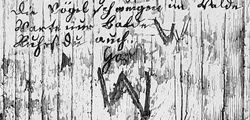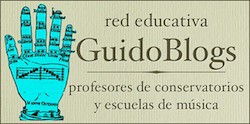
fotografia de Man Ray
La Central, one of the best bookshops in Barcelona, organizes every season, a series of short courses on literature and, recently, also about music. During their Winter Academy, I gave a course on Lied, for seven weeks (fourteen hours), covering very briefly from pre-schubertian to post-straussian Lieder, a course that ended one month ago. I greatly enjoy giving those courses, and this one wasn't an exception. So, my first reason to write this post is to show my gratitude to all participants. Thank you for your trust, your contributions, your curiosity your good mood... Thank you very much indeed!
The second reason is one of the questions that arose during the last class. I answered it there and then, of course, but I thought it was a very good question which could interest my readers too. The question was: how did you choose the Lieder we listened during the course? And then, a second question came forth: were they your favourite ones? My answer was that they may or may not be my favourite, but I didn't choose any song I didn't like (there is plenty to choose from!). Later, I thought about how many of my favourite I did share and when I was going over the list I realized that, in fact, not many.
But let's go back to the main question: how did I choose those Lieder? To be honest, with great difficulty. Schumann, for example, could be relatively easy, with around two hundred fifty songs concentrated in two specific times and well-organized in cycles. But Schubert... how do you choose ten Lieder by Schubert, among the more than six hundred that he wrote? One option was deciding that every song was also an excuse to talk about other aspects of Lied, aside from composers. Poets, such as Goethe, Heine, Eichendorff, Rückert, Müller... couldn’t be left out, and if we had the chance to listen to them with different composers, even better. Also, the songs’ subjects: love, death, night, pantheism, mythology... Or formal aspects, such as strophic or through-composed songs, and other issues such as whether songs are mini-operas (I must confess I hate this comparison), how the prosody of the poem and the music are related or why we, the audience, need poems in their original language at the recitals.
In addition, I imposed myself a time restriction: songs should be short. The less duration, the more songs. I only shared two or three that lasted more than four minutes, and many of them lasted around two minutes; often, even less. And, finally, I stuck to a last condition about performers. While preparing the course, I decided I wouldn't talk about every performer, it was a matter of (lack of) time; instead, I would let the participants to decide which performance was worth talking further. But, of course, I wanted to emphasize their huge importance, and I did it by choosing as many as possible. Each singer would sing just one song during the whole course; exceptionally, two. That way, we listened to fifty-four different singers, nine of which sang a second song (so we heard sixty-five songs). I know it's a very questionable system: a course about Lied and you only listen to Dietrich Fischer-Dieskau twice?! But, this way, we heard many different ways of singing, singers "in the old days" and today singers. Nevertheless. I didn't restrict the pianists; if I would have done so, I would have made life too difficult for myself. As you can see, choosing the songs became a jigsaw puzzle; nothing to do with my usual spontaneity here, on Liederabend.
There's still a third reason for this post: I owe a twelve-tone song to my students, because I didn't share it the last day of the course. That's why today we're listening to Alban Berg. In 1917, the composer gave a notebook to his wife Helene with ten songs he had composed in 1907, the year they first met; Berg orchestrated seven of them in 1928, today known as Sieben früher Lieder. The three remaining were forgotten, until in 1930 Berg recovered one of them, Schließe mir die Augen beide (some sources date it from 1900, when Berg was fifteen), to publish it with another song he had written in 1925 from the same poem by Theodor Storm. It wasn't the first time a composer made two songs with the same poem, but it was the first that one version was tonal and the other one, atonal.
Almost every song we’ve heard so far is tonal, that is, composers used a system that organizes the notes according to a hierarchy: there are main notes and less important notes. That system has been established in our culture for centuries and we have it fully internalized, even though we didn't know a bit about music. In the twelve-tone system (a variation of atonal system), which was used by Berg for the first time in this song, the notes are organized in the most democratic way: all are equally important. The work begins with the tone row, a series consisting of the twelve notes of the scale, which becomes its basis. The composer makes changes, following a certain structure and under the condition of not repeating any note until the twelve are used. That is to say, there are rules both in twelve-tone and tonal systems. Maybe because twelve-tone system is relatively new (not even one hundred years) and has been hardly use, we aren't still completely used to it.
Today I suggest listening to two versions of Schließe mir die Augen beide, the late romantic and the twelve-tone, both performed by Jessye Norman and Geoffrey Parsons. Just in case you are curious, this is the song’s tone row:
The second reason is one of the questions that arose during the last class. I answered it there and then, of course, but I thought it was a very good question which could interest my readers too. The question was: how did you choose the Lieder we listened during the course? And then, a second question came forth: were they your favourite ones? My answer was that they may or may not be my favourite, but I didn't choose any song I didn't like (there is plenty to choose from!). Later, I thought about how many of my favourite I did share and when I was going over the list I realized that, in fact, not many.
But let's go back to the main question: how did I choose those Lieder? To be honest, with great difficulty. Schumann, for example, could be relatively easy, with around two hundred fifty songs concentrated in two specific times and well-organized in cycles. But Schubert... how do you choose ten Lieder by Schubert, among the more than six hundred that he wrote? One option was deciding that every song was also an excuse to talk about other aspects of Lied, aside from composers. Poets, such as Goethe, Heine, Eichendorff, Rückert, Müller... couldn’t be left out, and if we had the chance to listen to them with different composers, even better. Also, the songs’ subjects: love, death, night, pantheism, mythology... Or formal aspects, such as strophic or through-composed songs, and other issues such as whether songs are mini-operas (I must confess I hate this comparison), how the prosody of the poem and the music are related or why we, the audience, need poems in their original language at the recitals.
In addition, I imposed myself a time restriction: songs should be short. The less duration, the more songs. I only shared two or three that lasted more than four minutes, and many of them lasted around two minutes; often, even less. And, finally, I stuck to a last condition about performers. While preparing the course, I decided I wouldn't talk about every performer, it was a matter of (lack of) time; instead, I would let the participants to decide which performance was worth talking further. But, of course, I wanted to emphasize their huge importance, and I did it by choosing as many as possible. Each singer would sing just one song during the whole course; exceptionally, two. That way, we listened to fifty-four different singers, nine of which sang a second song (so we heard sixty-five songs). I know it's a very questionable system: a course about Lied and you only listen to Dietrich Fischer-Dieskau twice?! But, this way, we heard many different ways of singing, singers "in the old days" and today singers. Nevertheless. I didn't restrict the pianists; if I would have done so, I would have made life too difficult for myself. As you can see, choosing the songs became a jigsaw puzzle; nothing to do with my usual spontaneity here, on Liederabend.
There's still a third reason for this post: I owe a twelve-tone song to my students, because I didn't share it the last day of the course. That's why today we're listening to Alban Berg. In 1917, the composer gave a notebook to his wife Helene with ten songs he had composed in 1907, the year they first met; Berg orchestrated seven of them in 1928, today known as Sieben früher Lieder. The three remaining were forgotten, until in 1930 Berg recovered one of them, Schließe mir die Augen beide (some sources date it from 1900, when Berg was fifteen), to publish it with another song he had written in 1925 from the same poem by Theodor Storm. It wasn't the first time a composer made two songs with the same poem, but it was the first that one version was tonal and the other one, atonal.
Almost every song we’ve heard so far is tonal, that is, composers used a system that organizes the notes according to a hierarchy: there are main notes and less important notes. That system has been established in our culture for centuries and we have it fully internalized, even though we didn't know a bit about music. In the twelve-tone system (a variation of atonal system), which was used by Berg for the first time in this song, the notes are organized in the most democratic way: all are equally important. The work begins with the tone row, a series consisting of the twelve notes of the scale, which becomes its basis. The composer makes changes, following a certain structure and under the condition of not repeating any note until the twelve are used. That is to say, there are rules both in twelve-tone and tonal systems. Maybe because twelve-tone system is relatively new (not even one hundred years) and has been hardly use, we aren't still completely used to it.
Today I suggest listening to two versions of Schließe mir die Augen beide, the late romantic and the twelve-tone, both performed by Jessye Norman and Geoffrey Parsons. Just in case you are curious, this is the song’s tone row:
F - E - C - A - G - D - A flat - D flat - E flat - G flat - B flat - B
(Series are supposed to be indicated by numbers, but I think this way is more practical). The voice repeats five times this row, by changing duration and octaves and by adding rests to separate the verses (verses have seven or eight syllables, so verses and twelve note series don't match). In the meanwhile, the piano completes the series generated from the original, but we won't go into that. I hope you like and find interesting the two ways Alban Berg musicalized the same poem.
Schließe mir die Augen beide (1907)
Schließe mir die Augen beide (1925)
Schließe mir die Augen beide
mit den lieben Händen zu;
geht doch alles, was ich leide,
unter deiner Hand zur Ruh.
Und wie leise sich der Schmerz
Well' um Welle schlafen leget,
wie der letzte Schlag sich reget,
füllest du mein ganzes Herz.
mit den lieben Händen zu;
geht doch alles, was ich leide,
unter deiner Hand zur Ruh.
Und wie leise sich der Schmerz
Well' um Welle schlafen leget,
wie der letzte Schlag sich reget,
füllest du mein ganzes Herz.
Close both of my eyes for me
with your beloved hands;
then everything that makes me suffer
will, beneath your hands, go silent.
And as the pain gently drifts,
wave by wave, off to sleep,
as the last surge ripples,
you fill my entire heart.
with your beloved hands;
then everything that makes me suffer
will, beneath your hands, go silent.
And as the pain gently drifts,
wave by wave, off to sleep,
as the last surge ripples,
you fill my entire heart.
(translation by Emily Ezust)












